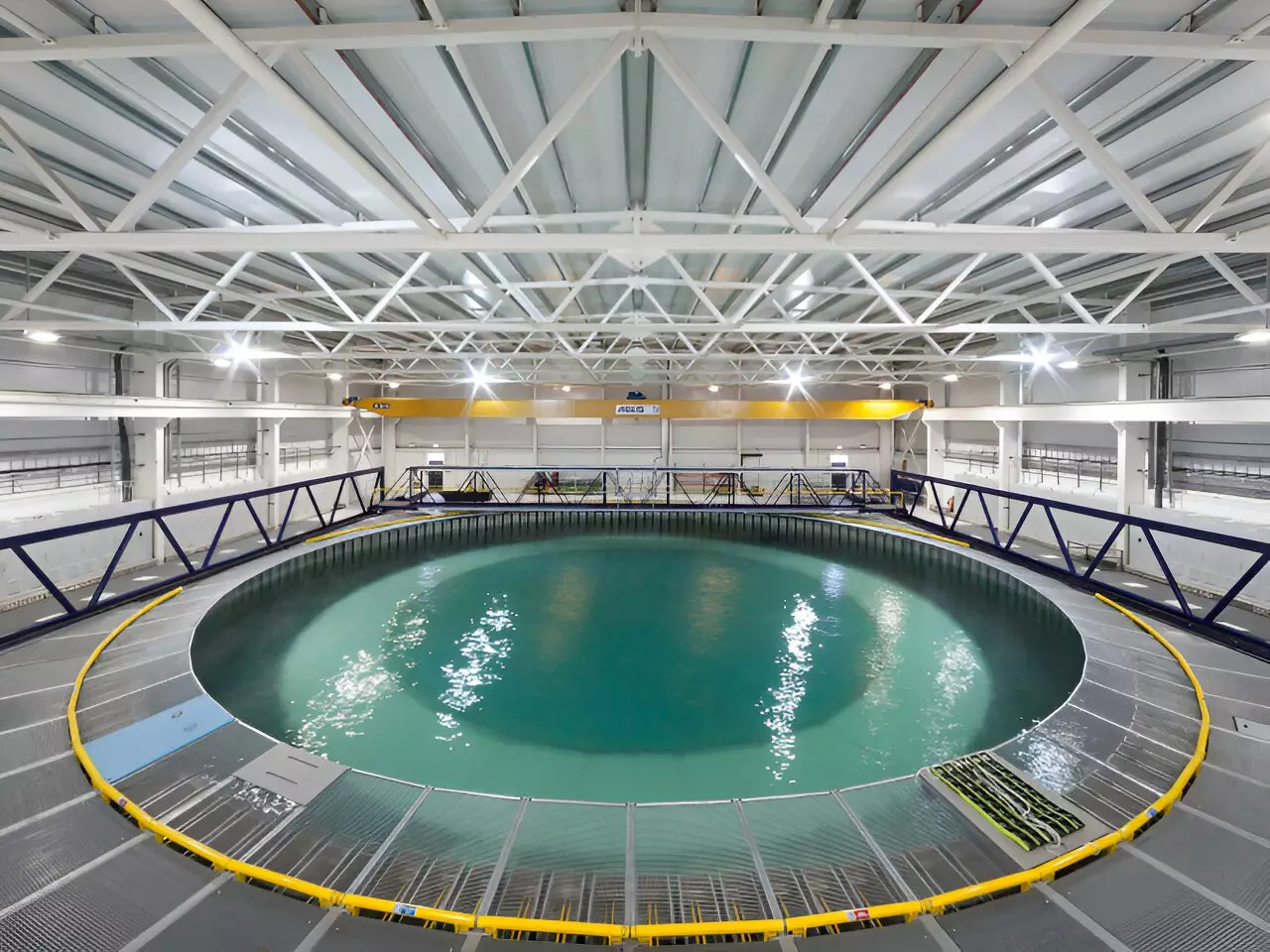The world’s oceans are a source of mystery and wonder, but a recent breakthrough in oceanographic research has illuminated the complexities of wave dynamics in ways that challenge longstanding assumptions. A new study published in *Nature* has revealed that ocean waves can behave in significantly more extreme and intricate manners than previously believed. This research not only reshapes our understanding of wave behavior but holds profound implications for engineering, meteorology, and environmental science.
Traditionally, scientists and engineers have approached ocean waves as two-dimensional entities, limiting their understanding of how waves interact and break. This simplified view has defined the framework for many oceanographic models and marine structure designs. However, this latest research led by a team from The University of Manchester and the University of Oxford highlights that in reality, ocean waves often travel in multiple directions, leading to complex behavior.
The investigation showcases that under certain conditions—especially when waves converge from different directions—the height of these waves can reach unprecedented steepness. In particular, the data suggests that three-dimensional waves can become twice as steep prior to breaking compared to their two-dimensional counterparts. More astonishingly, these multidirectional waves can continue to grow in height even after the breaking point, a phenomenon that challenges conventional physics as we know it.
The study emphasizes the phenomenon known as “crossing waves,” which arises when wave systems encounter one another or when abrupt changes in wind direction occur—such as in hurricane conditions. The research indicates that waves propagating from widely varied directions can amplify the resultant wave height drastically, forming atypical and dangerous sea states.
Dr. Samuel Draycott of The University of Manchester explains that these multidirectional conditions permit waves to exceed the previously accepted safe limits significantly. This revelation could redefine risk assessments and safety protocols in marine engineering, particularly in the construction of offshore structures, where underestimating potential wave heights could have disastrous consequences.
The implications of these findings extend beyond theoretical understanding; they stand to reshape the strategies employed in the design and construction of marine infrastructures such as wind turbines and oil rigs. Current designs are often rooted in simplistic, two-dimensional wave models, potentially leading engineers to overlook the more variable and extreme behaviors depicted by three-dimensional waves. Dr. Mark McAllister from the University of Oxford emphasizes that this oversight could result in marine structures that are fundamentally less reliable in the face of real-world conditions, enhancing the risk of catastrophic failure.
As scientists strive to create more robust designs, it’s imperative that they integrate this new understanding of wave mechanics into their criteria. This approach will not only improve the structural resilience of marine facilities but could also enhance the overall safety of maritime operations.
The effects of this research also stretch into environmental science, particularly in understanding the air-sea interaction processes that are pivotal to climate dynamics. Wave breaking is crucial for gas exchanges between the ocean and atmosphere, especially in the absorption of carbon dioxide. Understanding the nuances of how complex waves break can yield insights into biogeochemical cycles, specifically the transportation of essential nutrients and pollutants, including microplastics and phytoplankton.
Understanding wave dynamics at a more profound level is crucial as we navigate the complexities of climate change and its consequences. The findings from this new study can inform broader environmental models, allowing for more accurate predictions of ocean behavior in a changing climate.
The research builds upon previous experiments, including the study of the infamous Draupner wave—a freak wave that has puzzled scientists for decades. The team employed a novel three-dimensional wave measurement technique at the FloWave Ocean Energy Research Facility in Scotland, which is uniquely capable of generating and simulating waves from multiple directions. This advancement is vital for accurately reproducing real-world maritime environments in laboratory conditions.
Principal Experimental Officer Dr. Thomas Davey noted that the ability to recreate the complexities of actual sea states represents a significant leap in oceanographic research methodologies. It allows scientists to dissect wave breaking behaviors that were once challenging to observe, facilitating a deeper understanding of marine dynamics.
The revelations from this study signal a transformative shift in how we understand ocean waves, challenging established paradigms and calling for a reevaluation of engineering practices, environmental models, and safety protocols. As further research unfolds, embracing the complexity of three-dimensional wave dynamics will not only enhance our ability to design resilient structures but also deepen our understanding of vital ocean processes that underpin our planet’s health. The ocean, with its unpredictable nature, remains a frontier of exploration where every discovery opens new doors to understanding and innovation.

